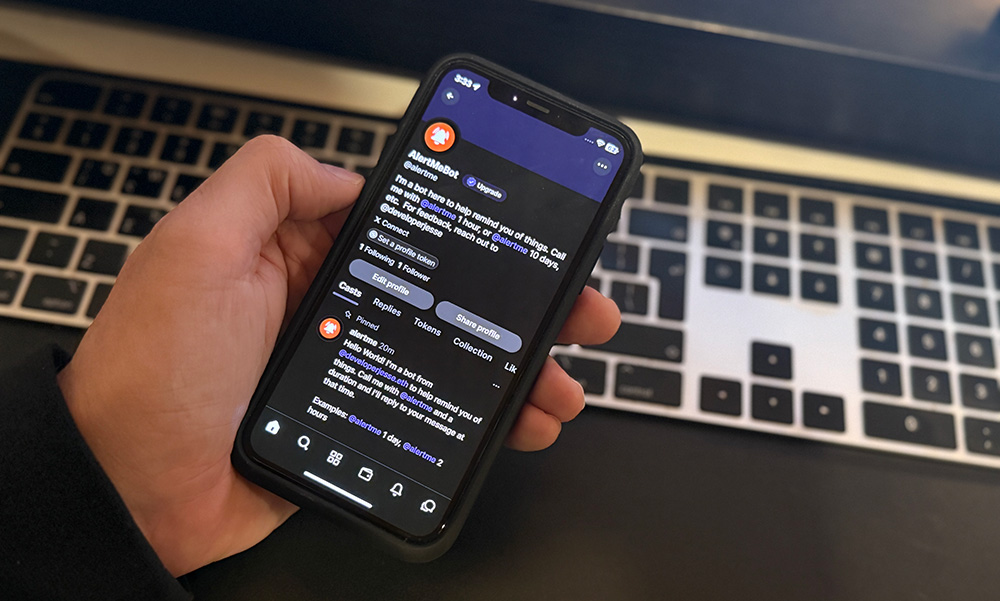In my previous article, I explored the ERC20 approve() method and how it serves as a foundational component for secure token interactions in the DeFi ecosystem. There is also an upcoming update with EIP-7702: Set EOA account code, that could allow a wallets to batch transactions. However, there’s another, existing approach that addresses some of the user experience challenges that the two-transaction approve()/transferFrom() pattern presents, the transferAndCall method.
The User Experience Challenge
While the separation of concerns in the standard ERC20 pattern offers security benefits, it introduces friction in the user experience, especially for newer users.
- Users must sign two separate transactions
- Both transactions incur gas costs
- The process takes more time to complete
- The workflow can be confusing for blockchain newcomers
For those building user-facing applications in the Rootstock ecosystem or any EVM-compatible blockchain, these friction points can significantly impact adoption and user satisfaction.
Enter the transferAndCall Token Standard
The ERC677 transferAndCall token standard emerged as a solution to these user experience challenges. It combines token transfer and contract interaction into a single atomic operation.
A basic implementation looks similar to this:
function transferAndCall(
address to,
uint256 value,
bytes calldata data
) external returns (bool success) {
// Transfer tokens
_transfer(msg.sender, to, value);
// Call the receiving contract
(bool success, ) = to.call(data);
require(success, "Call failed");
return true;
}
This approach, which is implemented in the RIF token on Rootstock, allows users to transfer tokens and trigger a function on the receiving contract in a single transaction.
Understanding the data Parameter and the Receiving Contract
The bytes calldata data parameter is crucial to the functionality of transferAndCall. This parameter contains encoded data that will be passed to the receiving contract’s standardized onTokenTransfer function.
In the ERC677 standard, the receiving contracts must implement:
function onTokenTransfer(
address sender,
uint256 value,
bytes calldata data
) returns (bool);
When the token contract calls the receiving contract, it automatically passes:
- The original sender’s address
- The amount of tokens transferred
- The additional data parameter for custom instructions
The data parameter would typically encode the specific staking action or parameters. For the Rootstock Collective DAO, the staked RIF contract (stRIF) would need to implement the onTokenTransfer handler, similar to this:
function onTokenTransfer(
address sender,
uint256 value,
bytes calldata data
) external returns (bool) {
// Verify that msg.sender is the RIF token contract
require(msg.sender == address(rifToken), "Unauthorized caller");
// Mint equivalent stRIF tokens to the original sender
_mint(sender, value);
// Additional logic using the data parameter if needed
// ...
return true;
}
Note: this is a sample implementation, and does not prevent reentrancy attacks, which is discussed below.
This implementation ensures that the staking process happens securely in a single transaction while maintaining proper access controls.
Benefits for the Rootstock Collective DAO
Implementing transferAndCall in our stRIF/RIF staking system could streamline the user experience considerably:
- One-Click Staking: Users could stake their RIF tokens with a single transaction instead of two
- Reduced Gas Costs: Only one transaction fee instead of two
- Simplified User Journey: Fewer steps mean less confusion for new users
- Atomic Operations: The entire process either succeeds or fails as a unit, preventing partial execution states
Implementation Considerations and Risks
While the UX benefits are compelling, implementing transferAndCall requires careful consideration. The sample implementation above does not handle the security implications.
1. Security Implications
This pattern combines authorization and execution, which removes some of the safety guardrails that the two-step process provides. Developers must:
- Ensure the receiving contract properly validates incoming calls and only mint the tokens after the user has deposited the initial token.
- Implement robust access controls and transaction validation
- Guard against reentrancy attacks, as the receiving contract’s callback function could potentially call back into the token contract
2. Compatibility Concerns
The standard ERC20 interface doesn’t include transferAndCall, and the ERC677 standard didn’t gain mass adoption. This means:
- Custom implementation is required, often through extensions like ERC677 or similar standards
- Less standardization across the ecosystem
- Potentially more complex auditing requirements
3. Developer Responsibility
With transferAndCall, developers assume more responsibility for ensuring secure implementations:
- The receiving contract must correctly handle the incoming tokens
- Error handling becomes more complex, especially when the gas may not be enough to execute the entire transaction.
- Testing requirements increase significantly
Finding the Right Balance
The choice between the standard ERC20 pattern and transferAndCall depends on weighing several factors:
- User Base: How technically sophisticated are your users?
- Security Requirements: How critical is the separation of concerns?
- Developer Resources: Can you ensure a secure implementation?
- Ecosystem Integration: How important is compatibility with existing tools?
In some cases, offering both options might be the optimal approach—allowing advanced users to use direct methods while providing simplified interfaces for newcomers.
Conclusion
The transferAndCall pattern represents an important evolution in blockchain interface design, prioritizing user experience while maintaining the underlying security that blockchain systems require. While it introduces implementation challenges and requires careful security considerations, the UX benefits can be substantial—especially for newcomers to the Web3 ecosystem.
For a new project, implementing this pattern could lower barriers to participation, potentially increasing engagement and adoption. However, it would require a thorough security review and careful implementation to ensure it doesn’t introduce vulnerabilities.
As we continue to build and refine blockchain applications, finding the right balance between security, standardization, and user experience remains one of our primary challenges. The transferAndCall pattern gives us another tool in our arsenal to create more accessible and user-friendly decentralized systems—when implemented with the proper care and attention to security details.
 AlertMe - Farcaster Reminder Bot
AlertMe - Farcaster Reminder Bot
 A Developer's Guide to Storytelling
How to make your technical work matter to people who don't speak code
A Developer's Guide to Storytelling
How to make your technical work matter to people who don't speak code
 Let them fix it!
Let them fix it!